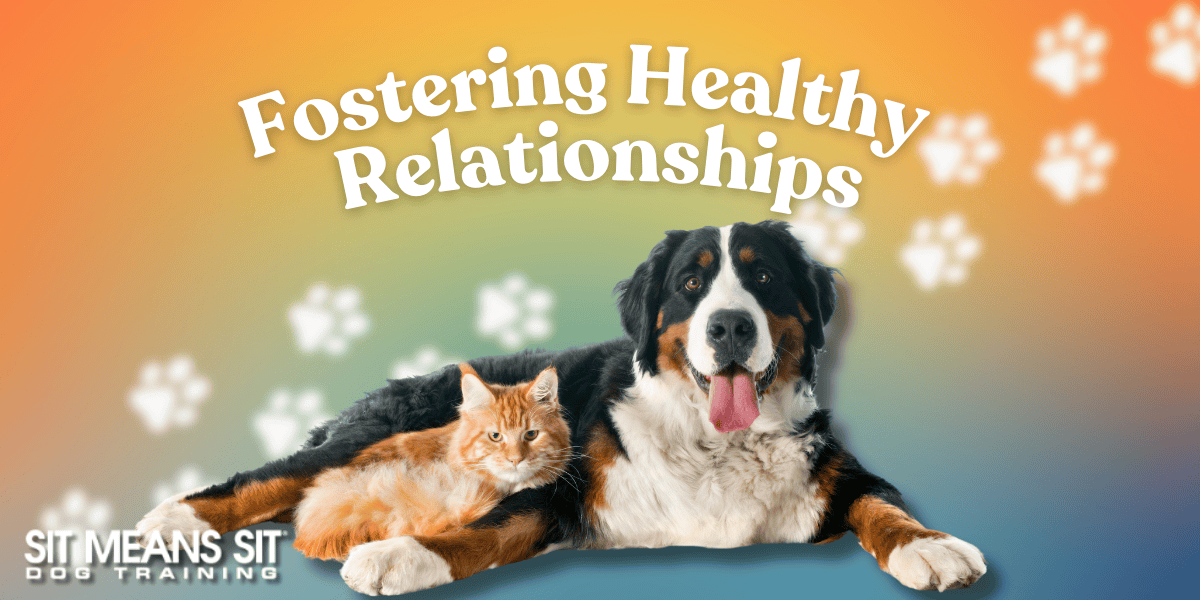It’s a popular misconception that cats and dogs are mortal enemies. Some of our furry friends don’t get along perfectly, but maybe “frenemies” is a better way to describe the pair. Despite their different temperaments, cats and dogs can become two peas in a pod with the proper care and attention. With these tips, your pets will feel closer than ever, and that “frenemy” title will be irrelevant. Your pets will be old pals in no time!
Steps to Take with Your Canine
One thing to remember about fostering a better relationship between your pets is their personalities and natural instincts. Dogs are natural hunters and love to chase. So, a lot of the work in better relationships will come from the work you do with your pup.
Obedience training is the first step in changing the dynamic between your cat and dog. By teaching Fido basic commands like sit and stay, you’re already one step closer to bettering their friendship. Do not allow your pup to chase your cat. When this happens, your dog associates this with fun and playtime. The longer your dog does this, the harder a habit it will be to break, and it will drive your cat and dog further apart. If your cat feels threatened, it will not want to be around your dog, prompting the dog to chase more. This creates an endless cycle, so start training early to minimize these issues.
If you’re introducing a pup into a cat home, it’s important to make sure the new friend respects the seasoned professional and their spaces. Do not give your dog access to the entire home right away; let them both get slowly acclimated to the new environment.
You may also consider a tether or leash for your pooch. Traditionally used for walks and being public, leashes can be a perfect way to bring your pets around each other without letting them run wild.
Steps to Take with Your Feline
Your kitty is in a different position in this situation. While cats can be mischievous troublemakers, they’re often playing defense in the cat and dog dynamic. It’s important to foster a safe relationship in which both pets can trust and be comfortable.
One of the best things you can do for your cat is to give it a safe space to decompress. This dog-free area should make your cat feel at home and completely calm. Pets can be territorial; by letting your cat have its own space, the likeliness of conflict shrinks and helps to foster cordial behavior. These spots should be high up; cat trees, shelving, and on top of your refrigerator are all popular places for kitty hideouts! Along with their own safe spaces, you should separate cat food, cat beds, and litter boxes from anything to do with your dog. These are vital parts of your cats’ everyday lives and should be respected.
If you’re introducing a cat into a dog home, remember to give your cat lots of time and space to adjust.
Working Together
The most crucial part of fostering a healthy relationship between your pets is doing it together. There’s no chance of a bond or friendship unless you take the time to bring your cat and dog together and put in the hard work. For the first few weeks, only allow pet interaction under supervision. This protects both furry friends from aggressive behavior and even injury.
Consider integrating your pets’ scents and other personal items to get them to recognize each other. Both cats and dogs rely on scent the way humans rely on sight. Let your pets get comfortable by swapping pillows or even a towel with their scent on it! However, it’s important to remember not to disrespect their space. Cats and dogs alike can be territorial, so be patient when trading scents—another milestone to be patient when handling is pet sharing, specifically, water bowls. Conflict can arise when pets do not have separate water bowls. If you do choose to combine, go slow and keep a close eye on your furry friends to lessen the chance of conflict or aggression.
Lastly, punishing your pets for lousy behavior is crucial, but rewarding them for good is more important. When your pets do wrong, they will understand it’s inappropriate to continue that behavior with correct punishments. Consider implementing a “timeout” for either pet so they can associate their lousy behavior with punishment. Furthermore, reward their achievements as often as you can. This not only promotes excellent behavior but also associates your pets with each other and rewards!
Despite popular belief, dogs and cats can really become closer than ever. With your hard work and care, in no time, you’ll have a group of kind and cordial furry friends. Remember, every pet is different; some pets may get along quickly, while others take some time and TLC. Don’t give up—your pets will be so glad you didn’t!

